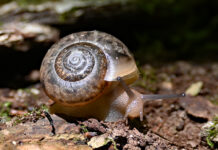Monarch butterfly populations hit rock bottom during the winter of 2013-2014 when they occupied an area of just 2.8 acres of central Mexican mountaintop oyamel fir forest. According to a report by www.monarchjointventure.org, the population was estimated to be 33 million monarchs.
That may seem like a lot of butterflies, but in 1996-1997, the population peaked at one billion monarchs occupying 44.5 acres of winter habitat. Fortunately, monarchs like most insects, have a high reproductive potential.
Quick recovery
That means they can reproduce rapidly, and their populations can recover quickly under ideal conditions. Two summers ago, I saw one monarch, and last year I saw none.
During that time I received very few monarch reports from readers, so I’m not surprised that I’ve gotten lots of mail asking how monarchs are doing this year.
From reports I’ve read this summer, I’m cautiously optimistic about the monarch’s future.
Last winter, 2014-2015, the population rebounded to 56 million. At this point a reasonable question is how even experts count such large numbers of monarchs.
The counts, of course, are estimates. Counts begin in late December on the winter grounds in Mexico, when monarch clusters are most compact and movement is minimal. Then, every occupied tree in each colony is mapped.
From those maps, the area of each colony is measured in hectares (2.47 acres per hectare). Researchers know there are approximately 50 million monarchs per hectare, so simple math yields the population estimates.
This summer I saw my first monarch on Aug. 1. Since then, however, I’ve seen more every day. Some days I’ve seen as many as ten.
My own observations, coupled with reports I’ve received from readers, suggest that monarchs have made an encouraging comeback this year.
Dr. Chip Taylor, director of Project MonarchWatch, reports that there have been “lots of eggs in the upper Midwest, from Michigan to the Dakotas.”
This is critically important because more than 90 percent of the monarchs that winter in Mexico originate there.
Taylor explains, “The size of the migration is strongly influenced by the number of eggs laid between July 20 and Aug. 7. Most of the butterflies that result from theses eggs become non-reproductive and join the migration from late August through early October as it moves progressively southward.”
Less optimistic
On the other hand, Virginia-based Dr. Lincoln Brower, a researcher from Sweet Briar College who has studied monarchs for decades, is less optimistic.
Earlier this week he told me, “The news is mixed. I’ve only seen four monarchs this summer, but I’ve heard encouraging reports from the Midwest and northern Virginia.”
For monarchs to continue a strong comeback this year, a variety of factors must cooperate. Weather along the migratory path must be favorable.
Right now, drought conditions in the south central Plains are hindering wildflower growth.
Monarchs rely on an abundant supply of nectar-bearing blooms to fuel their migration. And that’s assuming toxic herbicides applied by farmers along the migratory path have not exterminated the wildflowers.
Monarchs that make it to the winter grounds in Mexico must then survive three-to-four months before beginning their return migration. Under ideal conditions, that’s not a problem, but this year a strong El Nino is forecast.
If it sends cold temperatures and freezing rain into the evergreen forests where monarchs winter, the result could be catastrophic.
Hope for best. Under those conditions, millions of monarchs could die. So we cross our fingers and hope for the best. Until we have a sense of how many monarchs made it to the winter grounds, we must wait. The more important number, however, is how many leave the winter grounds and head north in February.
In the meantime, here’s what we can do to help monarch butterflies.
First, plant milkweed. It’s the only plant monarchs lay their eggs on.
Secondly, report any monarchs seen nectaring, roosting, flying, or breeding to www.journeynorth.org.
And finally, plant more milkweed.
For more information about monarchs, visit www.monarchwatch.org, www.journeynorth.org, or www.monarchjointventure.org www.













Monarch butterflies are not in trouble and don’t need tens of millions of taxpayer dollars to “revive” them. During the past couple days I filmed hundreds of monarchs at several different spots on the GMO crop farmlands of southern Minnesota:
https://www.youtube.com/watch?v=OoPdnTepKok
https://www.youtube.com/watch?v=9VOHjmY05BE
https://www.youtube.com/watch?v=mjhDPnobDSU